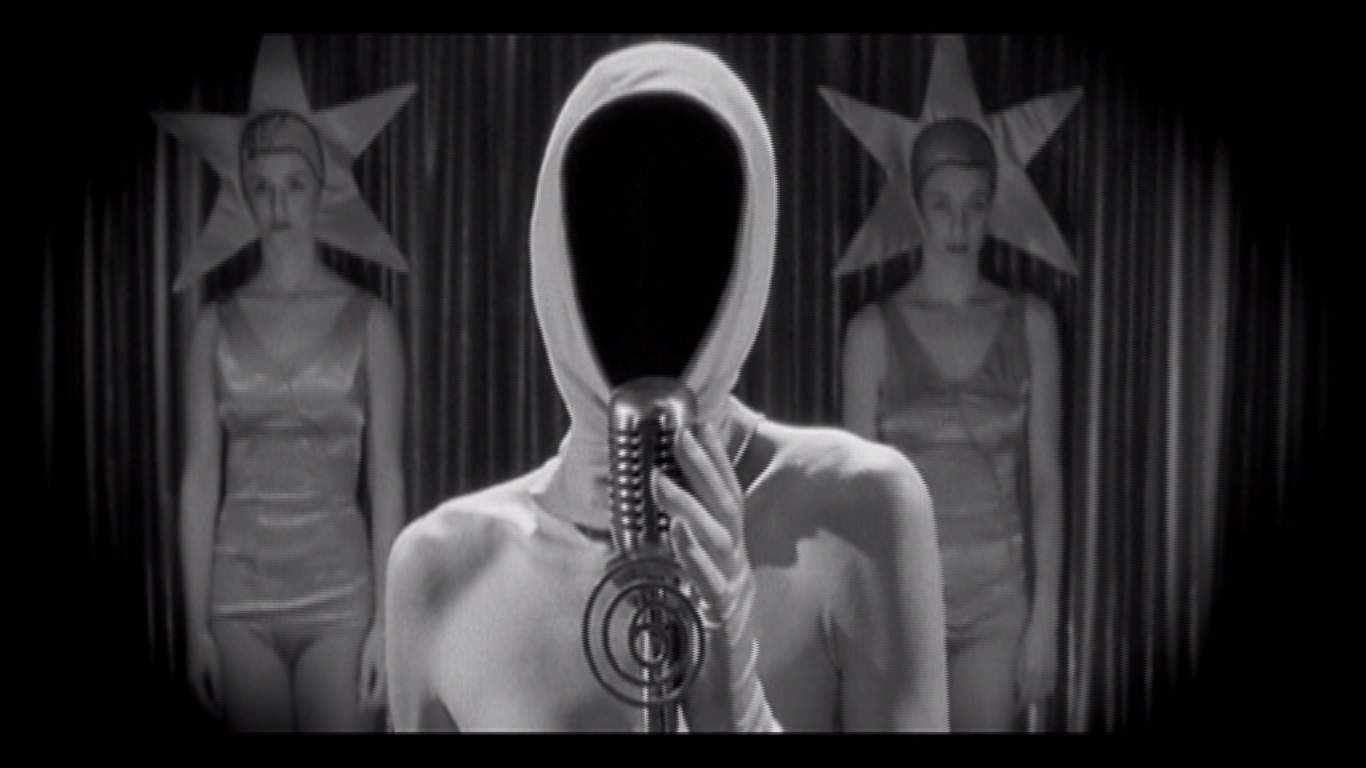By Chlotrudis Independent Film Society
Rating: 4 cats
Director: Esteban Sapir
Starring: Alejandro Urdapilleta | Julieta Cardinali | Rafael Ferro | Valeria Bertuccelli

Country: argentina
Year: 2008
Running time: 90
IMDB: http://www.imdb.com/title/tt0454065/
Jason says: “LA ANTENA opens with hands superimposed on a typewriter keyboard while a piano plays, and introduces us to its City Without a Voice by displaying it as the pages of a pop-up book. That’s a fanciful start to a fanciful movie, one that enjoys its storytelling and which always has another nifty image up its sleeve to tease the imagination.
“Years ago, we’re told, the inhabitants of this city lost the ability to speak, but they soldiered on. Now, though, the city is dominated by Mr. TV, who not only owns the local television station but the main food company (TV Foods!) as well. The most popular program features a mysterious woman known as ‘The Voice’ who still retains the power of speech. Living in this world is a TV repairman (Alejandro Urdapilleta) and his daughter Ana (Sol Moreno). One day, a letter from Mr. TV is delivered to Ana’s mother’s house that was meant for the Voice (the classic case of 166 Eclipse Street becoming 169 Eclipse Street because of a loose screw) that the eyes for the Voice’s blind son are ready if she’s ready to do her part. Ana doesn’t know what this means, but decides to make friends the the boy anyway. Coincidentally, her father has stumbled across part of it – and it’s sinister. He needs the help of his ex-wife (Valeria Bertuccelli) to escape pursuit, especially when Mr. TV and his cohort Dr. Y decide to kill the son, since another person with a voice could ruin their plans.
“As befits a story about an entire city without a voice, filmmaker Esteban Sapir films LA ANTENA in the style of a silent movie. The images are black and white, shot on 16mm film; the style alternates between the dream-like and early twentieth century – though an early twentieth century city where everybody speaks Spanish but much of the iconography is Soviet (an apt choice, as the film often feels like one of those Soviet sci-fi silents). Much like in genuine silents, the score incorporates sound effects, and The Voice’s costume incorporates a hood that casts such a deep shadow as to seem empty, making her speech seem oddly disconnected in the same way.
“That weird hood is just one example of Sapir’s visual imagination. To reach the antenna of the title, Ana and her family pass through a mountain range made out of crumpled newspaper, and the building itself is built to look like a gigantic manual typewriter, the kind with the round discs for keys. Key sequences involve suits that inflate like blimps; Mr. TV’s enforcer is some sort of giant rat-person. Most delightfully, the characters communicate in subtitles, giant ones which float before them in the air. Of course, this form of communication has its drawbacks – it’s rougher than usual to be a blind kid in this world, for instance, and everyone carries bells to attract attention because yelling is out of the question.
“The cast is pretty good for a very-low-budget production; Urdapilleta in particular makes for a good hero dad, and the actor playing his father brings the right accents of class and wisdom. Bertuccelli does a nice job establishing the mother as the less friendly divorced parent, but not making her such an ogre that we don’t buy her and her ex-husband being able to function together.
“For the most part, Sapir paces things pretty well and makes good use of his visuals. He cribs liberally from A TRIP TO THE MOON and METROPOLIS, and mostly has a handle on what kind of pacing to use for his sound/silent hybrid – holding still to give people time to read could look awkward unless done just right. There are a few moments toward the end that are rather stretched out (the same line repeated three times is plaintive, but after that you’re in danger of crossing into ‘annoying’ territory). He’s also not quite as bound to the technology of the era as some other retro-silent filmmakers are; there’s some decent CGI and animation used, including one really nice stop-motion sequence that doesn’t look real but does look cool.
“A few minor hitches notwithstanding, LA ANTENA is a very creative modern fable, a south-of-the-border treat for those of us that like the silent style. 4 cats”
” Seen 4 July 2008 at Concordia Theatre J.A. de Seve (Fantasia Festival)”
